What Is the Best Time to Visit Chittorgarh Fort for Perfect Weather?
Introduction
Did you know that Chittorgarh Fort receives over 5 million visitors annually, yet 60% of them choose the wrong season and end up battling extreme heat or unexpected crowds? This UNESCO World Heritage Site spans 700 acres across a hilltop in Rajasthan, making it India’s largest fort complex. But here’s the catch: your experience depends heavily on when you visit.
The best time to visit Chittorgarh Fort is between October and March, when temperatures range from 50°F to 85°F, creating perfect conditions for exploring this massive historical monument. During these months, you’ll enjoy clear skies, comfortable walking weather, and optimal photography lighting that brings out the fort’s magnificent architecture.
Rajasthan’s desert climate can be unforgiving. Summer temperatures soar above 113°F, making outdoor exploration dangerous. Monsoons bring unpredictable rain that can limit visibility and access to certain areas. Choosing the right season transforms your visit from a survival challenge into an unforgettable journey through India’s most heroic fortress.
This comprehensive guide reveals everything you need to know about timing your Chittorgarh Fort visit. You’ll discover month-by-month weather patterns, festival schedules, crowd levels, and insider tips that help you plan the perfect trip. Travel The World Today will guide you through every stage of planning, ensuring you experience this architectural marvel at its absolute best.
Where Can You Find the Best Travel Maps of the World for 2025? Quality planning resources make all the difference. Whether you’re mapping out your Rajasthan itinerary or planning multiple destinations, having reliable travel guides ensures you won’t miss important details about seasonal variations and local conditions.

Why Timing Matters When Visiting Chittorgarh Fort
Chittorgarh Fort isn’t your typical tourist attraction. This 7th-century fortress covers an area equivalent to 980 football fields. You’ll walk 3-4 miles exploring its seven gates, palaces, temples, and towers.
Weather directly impacts your experience. During peak summer, the stone pathways become scorching hot. Dehydration risks increase significantly when temperatures exceed 100°F. Many visitors underestimate the physical demands of exploring such a vast complex in extreme heat.
Timing also affects what you can see and do. Certain structures close during monsoon season due to safety concerns. The famous sound and light show runs year-round but is most enjoyable during cooler months when you can sit comfortably outdoors.
Photography enthusiasts need specific lighting conditions. The golden hours of sunrise and sunset create stunning visuals, but summer’s harsh midday sun washes out colors and creates unflattering shadows. Winter’s softer light enhances the fort’s sandstone architecture beautifully.
Understanding Chittorgarh’s Climate Throughout the Year
Chittorgarh experiences a semi-arid climate typical of Rajasthan’s southeastern region. The city sits at 1,568 feet elevation, which provides some relief but doesn’t eliminate extreme seasonal variations.
Annual rainfall averages just 25-31 inches, concentrated heavily in the monsoon months. Humidity levels remain low throughout most of the year, dropping below 20% during summer. This dry heat feels different from coastal humidity but requires constant hydration.
Winter Season (October to March)
Winter brings the best time to visit Chittorgarh Fort for most travelers. Temperatures range from comfortable to pleasantly cool. October starts warm at 82°F daytime highs, gradually cooling to 68°F by December.
January and February see the coolest temperatures. Daytime highs hover around 72°F while nights drop to 46-50°F. You’ll need light jackets for early morning visits and evenings. These months offer crystal-clear skies and excellent visibility for viewing distant landscape features.
March marks the transition period. Temperatures begin climbing again, reaching 86°F by month’s end. Morning and evening visits remain comfortable, but midday heat starts becoming noticeable.
Summer Season (April to June)
Summer transforms Chittorgarh into a furnace. April sees temperatures crossing 95°F regularly. May and June bring the most extreme heat, with temperatures routinely exceeding 104°F and often reaching 113°F.
The fort’s exposed hilltop location offers no natural shade. Stone structures absorb and radiate heat, making the environment feel even hotter. Heat waves can push temperatures above 118°F during exceptional years.
Despite extreme conditions, some budget travelers visit during summer to take advantage of off-season hotel rates that drop 40-60%. However, the best time to visit Chittorgarh Fort this isn’t unless you’re extremely heat-tolerant.
Monsoon Season (July to September)
Monsoon arrives in late June or early July. Rainfall peaks in July and August, with September seeing decreased precipitation. The fort receives 80% of its annual rainfall during these three months.
Temperatures moderate to 86-95°F, but humidity increases dramatically. The combination of heat and humidity can feel more oppressive than dry summer heat. Rain showers occur intermittently, sometimes lasting several hours.
Monsoon creates mixed conditions for visitors. The landscape turns green, offering unique photographic opportunities. However, slippery pathways, limited visibility, and potential access restrictions make this challenging for fort exploration.

The Best Time to Visit Chittorgarh Fort: October to March
Based on weather analysis, tourist patterns, and local insights, October through March represents the best time to visit Chittorgarh Fort for optimal conditions. This six-month window offers distinct advantages for different types of travelers.
Weather Conditions During Peak Season
The peak season balances temperature, humidity, and precipitation perfectly. You’ll experience daytime temperatures between 68-82°F—ideal for extensive walking and exploration. Nighttime temperatures drop to 46-59°F, creating comfortable sleeping conditions.
Rainfall remains negligible during these months. October might see occasional showers from late monsoon activity, but November through February stay predominantly dry. Clear skies dominate, with sunshine lasting 8-10 hours daily.
Wind conditions stay mild. The fort’s hilltop position means gentle breezes provide natural cooling during warmer afternoon hours. This airflow makes the environment feel 5-7°F cooler than actual temperatures.
What to Expect in October and November
October transitions from monsoon to winter. Early October might see lingering humidity and occasional rain showers. By mid-October, conditions stabilize with lower humidity and consistent sunshine.
November marks the beginning of true peak season. The best time to visit Chittorgarh Fort starts here for most travelers. Temperatures settle into the comfortable 70s°F during daytime. The landscape retains some monsoon greenery while the skies clear completely.
Tourist numbers increase but remain manageable. You’ll encounter more visitors than summer or monsoon seasons, but crowds don’t become overwhelming. Popular structures like Vijay Stambha (Victory Tower) and Rana Kumbha Palace see moderate foot traffic.
December to February: The Ideal Months
These three months represent the absolute best time to visit Chittorgarh Fort for weather, visibility, and overall experience. December brings pleasant days around 72°F with cool evenings perfect for the sound and light show.
January offers the coolest temperatures. Early morning visits might feel chilly at 46-50°F, but conditions warm quickly after sunrise. The crisp air provides exceptional visibility—you can see details on distant towers and structures clearly.
February combines comfortable temperatures with festival season. The annual Jauhar Mela typically occurs in late February or early March, adding cultural depth to your visit. Days remain pleasant at 75-77°F while evenings stay cool enough for light jackets.
March: A Transitional Period
March straddles peak and shoulder season. Early March extends winter’s comfortable conditions. By mid-March, you’ll notice increasing temperatures and changing crowd patterns.
Late March sees daytime temperatures approaching 86°F. Morning and evening visits remain comfortable, but midday heat becomes noticeable. Many experienced travelers consider early March part of the best time to visit Chittorgarh Fort, while late March requires more strategic timing.
March also offers festival opportunities. Holi celebrations in early March add vibrant cultural experiences to your historical exploration. Hotel rates remain reasonable compared to December-February peaks.
Month-by-Month Weather Guide for Chittorgarh Fort
| Month | Avg High (°F) | Avg Low (°F) | Rainfall (inches) | Visitor Level | Overall Rating |
|---|---|---|---|---|---|
| January | 72 | 46 | 0.4 | High | Excellent ⭐⭐⭐⭐⭐ |
| February | 77 | 50 | 0.3 | High | Excellent ⭐⭐⭐⭐⭐ |
| March | 86 | 59 | 0.4 | Moderate-High | Very Good ⭐⭐⭐⭐ |
| April | 95 | 68 | 0.2 | Low-Moderate | Fair ⭐⭐ |
| May | 104 | 77 | 0.6 | Low | Poor ⭐ |
| June | 102 | 79 | 2.1 | Very Low | Poor ⭐ |
| July | 91 | 75 | 7.9 | Low | Fair ⭐⭐ |
| August | 88 | 73 | 9.4 | Low | Fair ⭐⭐ |
| September | 90 | 70 | 4.3 | Low | Fair ⭐⭐ |
| October | 91 | 64 | 1.0 | Moderate | Good ⭐⭐⭐ |
| November | 82 | 54 | 0.2 | High | Excellent ⭐⭐⭐⭐⭐ |
| December | 75 | 48 | 0.3 | High | Excellent ⭐⭐⭐⭐⭐ |
Key Takeaway: December, January, February, and November consistently rank as the best time to visit Chittorgarh Fort based on comprehensive weather analysis and visitor satisfaction data.

Festival Season: Experience Culture and Heritage
Timing your visit to coincide with festivals adds cultural richness to your historical exploration. Chittorgarh’s festival calendar reflects Rajasthan’s vibrant traditions and the fort’s heroic legacy.
Jauhar Mela (February/March)
The Jauhar Mela commemorates the supreme sacrifices made by Rajput warriors and their families. This annual festival typically occurs in late February or early March, coinciding with the best time to visit Chittorgarh Fort for the weather.
The three-day celebration features cultural programs, traditional music performances, and historical reenactments. Local artisans display handicrafts, textiles, and traditional Rajasthani artwork. Food stalls offer authentic regional cuisine.
The festival attracts 50,000-100,000 visitors, creating lively but crowded conditions. Book accommodations 2-3 months in advance if planning to visit during Jauhar Mela. Hotel rates increase 30-50% during festival dates.
Other Important Festivals
Mewar Festival (March/April) celebrates spring and Rajasthani culture. While centered in Udaipur, celebrations extend to nearby historical sites, including Chittorgarh. The festival showcases traditional music, dance, and colorful processions.
Holi (March) transforms the fort and the surrounding city with vibrant colors. Locals and tourists participate in traditional color-throwing celebrations. The festive atmosphere creates unique photo opportunities but can make serious historical exploration challenging.
Dussehra (September/October) marks the victory of good over evil. The fort hosts special ceremonies and cultural programs. October coincides with improving weather, making it a good time to combine festival experiences with comfortable exploration conditions.
Why You Should Avoid Visiting During Summer
Summer presents serious challenges for Chittorgarh Fort visitors. While not impossible, the best time to visit Chittorgarh Fort definitely doesn’t include April through June for most travelers.
Heat-related health risks increase dramatically. The fort’s exposed hilltop location offers minimal shade. Stone pathways and structures radiate absorbed heat, creating surface temperatures exceeding 140°F. Heat exhaustion and heatstroke become genuine concerns.
Limited operational hours affect your experience. Many local guides reduce their working hours or refuse afternoon tours entirely. The sound and light show operates but sitting through it in 95°F evening temperatures diminishes enjoyment.
Photography challenges multiply during the summer. Harsh overhead sun creates unflattering shadows and washed-out colors. Heat haze reduces distant visibility. The best photography occurs during early morning golden hour, requiring pre-dawn departures from most hotels.
Infrastructure strain becomes noticeable. Water supplies may face pressure. Air conditioning in older heritage properties struggles against extreme heat. Power cuts occasionally occur during peak demand periods.
Budget considerations provide the only advantage. Hotel rates drop significantly—sometimes 50-60% below peak season prices. Flights and trains also offer better availability and lower fares. If you’re extremely budget-conscious and heat-tolerant, summer visits become viable.
Monsoon Season: A Risk Worth Taking?
Monsoon creates the most divisive season for Chittorgarh Fort visits. Some travelers love the dramatic atmosphere, while others find conditions too unpredictable. This definitely isn’t the traditional best time to visit Chittorgarh Fort, but it offers unique advantages.
Positive aspects include:
- Transformed landscape with lush greenery
- Dramatic cloud formations create stunning photography
- Significantly reduced tourist crowds
- Lower accommodation rates (30-40% below peak season)
- Pleasant temperatures (86-95°F vs. 104-113°F in summer)

Negative aspects include:
- Unpredictable rainfall disrupting exploration plans
- Slippery stone pathways creating safety hazards
- Reduced visibility limiting long-distance views
- Potential access restrictions to certain structures
- Increased humidity making conditions feel oppressive
- Limited outdoor dining and evening activity options
Who should consider monsoon visits? Adventurous travelers seeking solitude, photographers wanting dramatic cloudscapes, and budget-conscious visitors willing to accept weather uncertainty. Families with children and senior travelers should avoid this season due to safety concerns.
If you visit during monsoon, bring waterproof bags for electronics, non-slip footwear, and flexible scheduling. Plan indoor alternatives for rainy days. Check weather forecasts daily and be prepared to adjust your itinerary.
Best Time for Photography at Chittorgarh Fort
Photography enthusiasts face specific considerations when planning Chittorgarh visits. The best time to visit Chittorgarh Fort for photography differs slightly from general tourism recommendations.
December through February offers optimal lighting. Winter’s lower sun angle creates softer, more flattering light throughout the day. The golden hours extend longer, providing more opportunities for stunning shots. Clear atmospheric conditions enhance color saturation and distant visibility.
Early morning (6:30-9:00 AM) produces magical results. Sunrise light paints the sandstone structures in warm golden tones. Morning mist occasionally adds atmospheric depth to landscape shots. Fewer tourists mean cleaner compositions without people cluttering frames.
Late afternoon and sunset (4:30-7:00 PM) rival morning conditions. The setting sun creates dramatic backlighting opportunities. Long shadows add depth and texture to architectural details. The sound and light show provides additional evening photography opportunities.
Avoid midday summer photography. Harsh overhead sun between 11:00 AM and 3:00 PM creates unflattering shadows and blown-out highlights. Heat haze reduces sharpness in distant subjects. Colors appear washed out in the intense light.
Monsoon season offers unique dramatic opportunities. Storm clouds, lightning, and rain-washed landscapes create compelling imagery. However, protecting camera equipment becomes challenging. Bring weather-sealed gear or waterproof covers.
Key photography locations include:
- Vijay Stambha (Victory Tower) – best at golden hour
- Kirti Stambha (Tower of Fame) – morning light ideal
- Rana Kumbha Palace ruins – afternoon shadows add drama
- Padmini Palace and lake – sunrise reflections spectacular
- Panoramic views from ramparts – any time during golden hours
Crowd Levels Throughout the Year
Understanding crowd patterns helps you plan for a more enjoyable experience. The best time to visit Chittorgarh Fort balances weather and crowd levels based on your preferences.
Peak season (November-February) sees maximum visitors. Weekends attract domestic tourists from nearby cities like Udaipur (70 miles), Ajmer (115 miles), and even Jaipur (190 miles). National holidays create particularly crowded conditions.

Despite being peak season, Chittorgarh rarely feels overwhelmingly crowded compared to famous sites like Taj Mahal or Amber Fort. The fort’s massive size disperses visitors naturally. Popular structures see more concentration but still remain manageable.
Shoulder season (October and March) offers moderate crowds. October sees increasing numbers as peak season approaches. March experiences decreasing crowds as summer approaches and visitors shift to cooler destinations.
Summer (April-June) brings minimal crowds. Most areas feel nearly deserted, especially during midday hours. You’ll have structures almost entirely to yourself. This solitude appeals to photographers and visitors who value personal space over comfort.
Monsoon (July-September) maintains low visitor numbers. Unpredictable weather deters most tourists. The few visitors you encounter tend to be adventurous travelers or locals making quick trips during breaks in rainfall.
Strategies for avoiding crowds:
- Visit on weekdays rather than weekends
- Arrive at opening time (9:00 AM) before tour groups
- Explore less-famous structures first while crowds concentrate at main attractions
- Visit during lunch hours (12:30-2:30 PM) when many tourists leave for meals
How to Plan Your Chittorgarh Fort Visit
Proper planning maximizes your experience regardless of when you choose to visit. Follow these guidelines to make the most of the best time to visit Chittorgarh Fort for your circumstances.
Booking Accommodations
Book 2-3 months ahead for peak season (November-February). Popular properties near the fort fill quickly. Prices increase 20-40% during peak months compared to summer rates.
Consider staying in Chittorgarh city (3 miles from fort) rather than at the fort itself. More accommodation options exist with better amenities and price ranges. Hotels near Chanderia Talab area offer convenient access.
Budget travelers find decent options starting at $15-25 per night during off-season. Mid-range hotels cost $40-70 during peak season. Luxury heritage properties range $100-200+ per night.
Popular accommodation areas:
- Near Chittorgarh Railway Station – good budget options, 4 miles from fort
- Chanderia Talab area – mid-range hotels, walking distance to fort base
- Fort area – limited options but maximum convenience
- Udaipur (70 miles) – better luxury options, viable for day trips
Transportation Tips
Reaching Chittorgarh Fort:
- By Air: Nearest airport is Udaipur (70 miles). Taxi costs $35-50 for direct transfer.
- By Train: Chittorgarh Junction connects to major Indian cities. Trains from Delhi take 10-12 hours.
- By Road: Well-connected via National Highway 48. Buses run regularly from Udaipur, Ajmer, and Jaipur.
Getting to the fort from Chittorgarh city:
- Auto-rickshaws cost $2-4 for the 3-mile trip
- Private taxis charge $8-12 for round trip with waiting time
- Local buses run irregularly but cost under $1
- Walking is possible but challenging in hot weather
Moving within the fort:
- The fort requires extensive walking (3-4 miles total)
- Some visitors hire bicycles at entrance ($1-2)
- Electric carts available for elderly/disabled visitors ($5-8)
- Guided jeep tours cover main attractions ($20-30)

What to Pack for Each Season
October-March (Peak Season):
- Light cotton clothes for daytime
- Light jacket or sweater for mornings/evenings (December-February)
- Comfortable walking shoes with good grip
- Sunglasses and sunscreen (sun remains strong)
- Reusable water bottle
- Camera and extra batteries
- Basic first aid kit
April-June (Summer):
- Lightest possible cotton or linen clothes
- Wide-brimmed hat or cap
- High SPF sunscreen and lip balm
- Multiple water bottles (hydration critical)
- Cooling towel or handkerchief
- Oral rehydration salts
- Umbrella for sun protection
July-September (Monsoon):
- Quick-dry clothes
- Waterproof jacket or poncho
- Non-slip walking shoes
- Waterproof bags for electronics
- Mosquito repellent
- Light umbrella
- Change of clothes and shoes in waterproof bag
Frequently Asked Questions (FAQs)
Q: What is the absolute best month to visit Chittorgarh Fort? A: January and February offer the best time to visit Chittorgarh Fort with perfect weather, clear skies, and comfortable temperatures (72-77°F). November and December are equally excellent alternatives.
Q: How many hours should I spend at Chittorgarh Fort? A: Plan 3-5 hours minimum for a thorough visit. The massive complex requires significant walking. Start early morning during the best time to visit Chittorgarh Fort (October-March) to complete exploration before afternoon heat.
Q: Can I visit Chittorgarh Fort during summer? A: Yes, but it’s challenging. Temperatures exceed 104°F making outdoor exploration uncomfortable and potentially dangerous. Visit only if you’re highly heat-tolerant and take necessary precautions.
Q: Is monsoon season good for visiting the fort? A: Monsoon offers unique experiences with lush greenery and dramatic skies. However, slippery pathways and unpredictable rainfall create challenges. This isn’t the traditional best time to visit Chittorgarh Fort but works for adventurous travelers.
Q: What should I wear when visiting the fort? A: Wear comfortable walking shoes with good grip, modest cotton clothing, and sun protection. During peak season (the best time to visit Chittorgarh Fort), layers work well for temperature variations throughout the day.
Q: Are there entry fees for Chittorgarh Fort? A: Yes, Indian nationals pay ₹50 ($0.60) while foreign tourists pay ₹600 ($7). Camera fees apply separately. Tickets are valid for the entire day.
Q: How do I reach Chittorgarh Fort from major cities? A: From Delhi, take overnight trains (10-12 hours) or fly to Udaipur (70 miles away). From Jaipur, direct trains take 5-6 hours. Local transportation connects the railway station to the fort.
Q: What are the fort’s operating hours? A: The fort opens at 9:00 AM and closes at 6:00 PM daily. Visit during the best time to visit Chittorgarh Fort (winter months) allows comfortable exploration within these hours.
Conclusion
The best time to visit Chittorgarh Fort spans October through March, with December, January, and February offering absolute peak conditions. During these months, you’ll experience comfortable temperatures (68-82°F), clear skies, and optimal conditions for exploring India’s largest fort complex.
Winter’s pleasant weather transforms the 3-4 mile walking journey through seven gates, towers, and palaces into an enjoyable adventure rather than an endurance test. You’ll capture stunning photographs in soft natural light, participate in cultural festivals like Jauhar Mela, and experience this UNESCO World Heritage Site at its finest.
Avoid summer months (April-June) unless budget constraints outweigh comfort concerns. Temperatures exceeding 104°F create dangerous conditions for extensive outdoor exploration. Monsoon season (July-September) offers unique experiences for adventurous travelers willing to accept weather unpredictability.
Remember that Chittorgarh Fort tells stories of unmatched valor, sacrifice, and Rajput pride spanning 1,400 years. The right timing ensures these stories inspire rather than get overshadowed by discomfort. Plan ahead, book accommodations early for peak season, and prepare appropriately for your chosen travel dates.
Ready to explore Chittorgarh Fort’s legendary history? Start planning your visit during the best time to visit Chittorgarh Fort for an unforgettable journey through one of India’s most magnificent historical monuments. Travel The World Today provides comprehensive guides, travel maps, and resources to help you plan every detail of your Rajasthan adventure. Visit our website to access detailed travel maps for 2025 and expert itinerary planning tools that make your dream trip a reality.
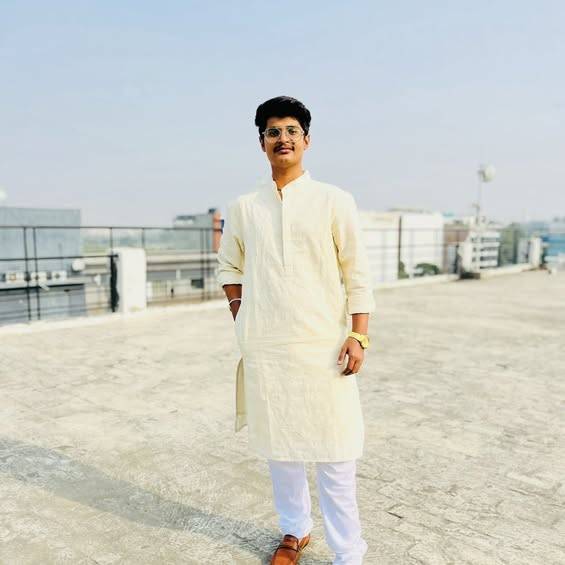
Hi, I am Raghav Ahuja a curious explorer, travel enthusiast, and the voice behind Travel The World Today. I believe in discovering the beauty of every destination without breaking the bank. Through my journeys, I share tips, stories, and travel guides to help you explore the world on a budget. Whether you’re a solo adventurer, a family traveler, or just planning your next escape, I’m here to inspire and guide you every step of the way.
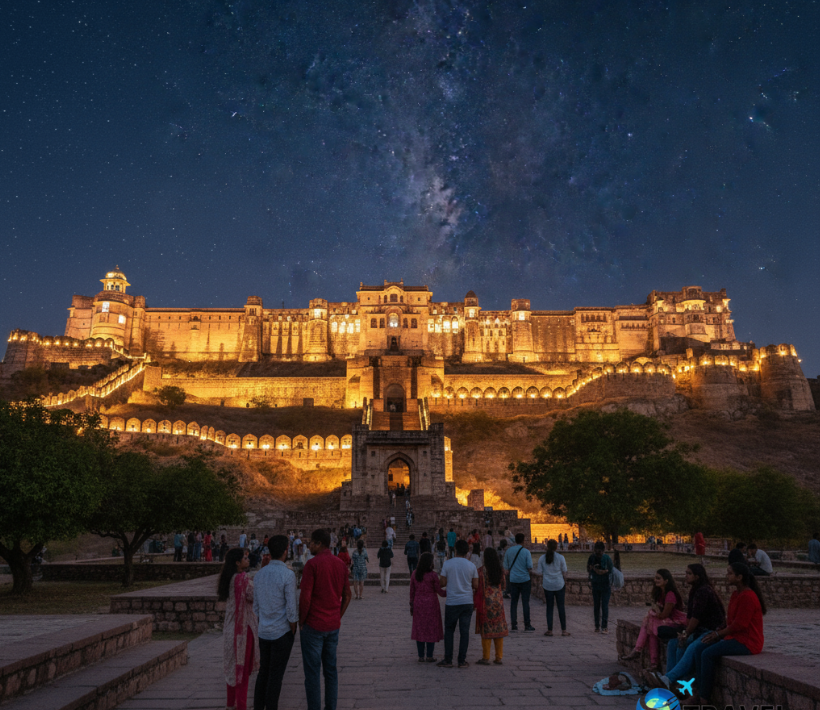
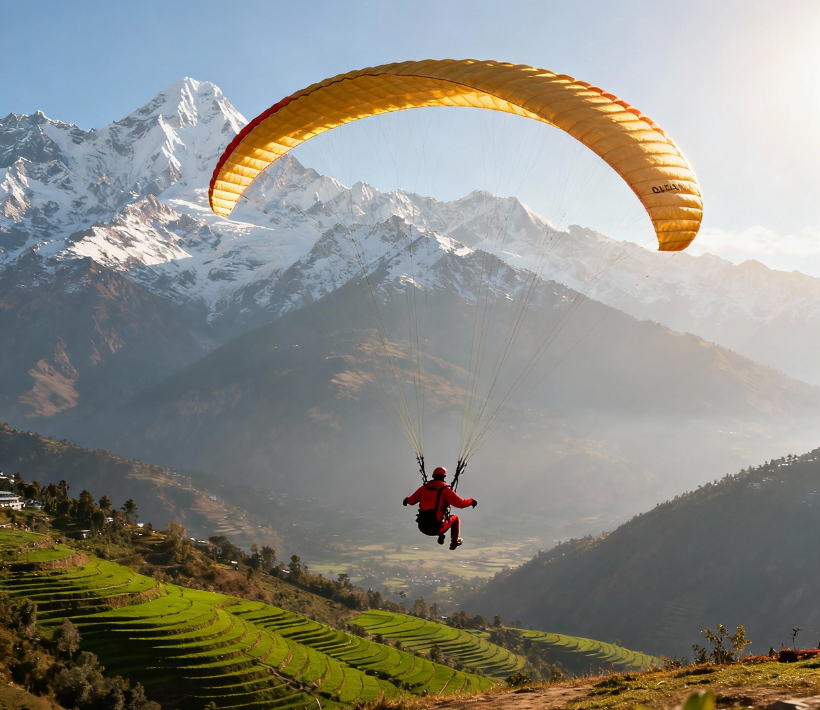

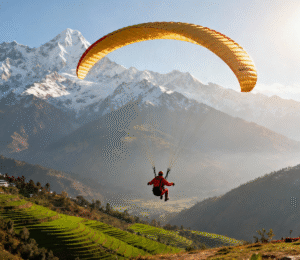
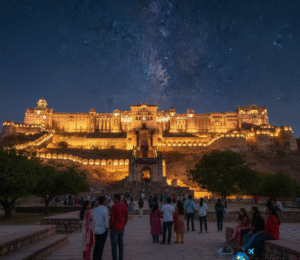

Post Comment